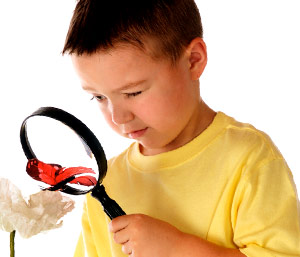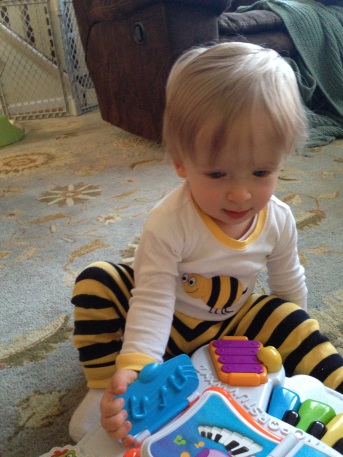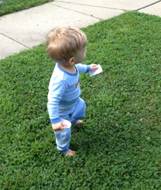Recommended Practices for Evaluation and Assessment
 Current literature indicates that recommended practices in evaluation and assessment of young children include implementing ongoing, strategic, and purposeful assessment strategies and tools which are authentic and functional. Best practices also include engaging families as partners in the assessment and evaluation processes and ensuring that those processes are culturally sensitive and inclusive of diversity. In addition, it is recommended that assessment and evaluation processes be collaborative, addressing multiple areas of development and implemented by practitioners representing two or more disciplines. The use of both qualitative and quantitative data as well as gathering information from multiple sources to assess and evaluate young children are critical practices.
Current literature indicates that recommended practices in evaluation and assessment of young children include implementing ongoing, strategic, and purposeful assessment strategies and tools which are authentic and functional. Best practices also include engaging families as partners in the assessment and evaluation processes and ensuring that those processes are culturally sensitive and inclusive of diversity. In addition, it is recommended that assessment and evaluation processes be collaborative, addressing multiple areas of development and implemented by practitioners representing two or more disciplines. The use of both qualitative and quantitative data as well as gathering information from multiple sources to assess and evaluate young children are critical practices.
Family-centered practices are at the heart of an effective evaluation and assessment process. Let's hear from two families about their experiences.
Resources
For additional information on best practices regarding the process of evaluation and assessment in early intervention, refer to the Agreed Upon Practices for Providing Early Intervention Services in Natural Environments, OSEP TA Community of Practice: Part C Settings. (2008, February).
Jonathan's Story
|
|
My son, Jonathan is a sweet, shy, easygoing little boy. He is very cautious and claps for himself when he does something he’s proud of. Jonathan was born prematurely and he’s always been small. As a parent, I followed the monthly developmental guides, wondering if he would develop at the same rate of other children his age. By 16 months and despite lots of encouragement, Jonathan was not yet walking. For months he stood and was able to balance himself, but could not take more than a step without falling. After discussing our concerns with our pediatrician, we contacted our local Baltimore County Infants and Toddlers program to schedule an evaluation.
At the end I felt like I learned so much about my child, and I had a plan to give him some support he needs. I felt great! A few months later, Jonathan met his goal. He took his first steps to me during a session with the physical therapist. It was a special moment that we shared together, and I am grateful to her for how she’s helped our family. We continue to work with the Infant and Toddlers program as Jonathan builds stability and strength in his ankles and feet, and we look forward to our next evaluation. |
Resource
For additional information on best practices regarding the process of assessment and evaluation in preschool, refer to Key Practices Underlying the IEP Process: Supporting Family Participation, Inclusive Practices, and Positive Outcomes for Preschool Children with Disabilities - developed by a NECTAC workgroup (2012, October).
Omar's Story
|
|
Our son Omar is four years old. Omar, his father, and my family and I have just moved here from another country. When we took Omar to the pediatrician, she recommended that we contact our local school system preschool special education program to try to get help for Omar. She diagnosed him with cerebral palsy, and was concerned about his development. We knew that he had trouble controlling his body and was not like other children. We did not know what to do.
|

 A team of three - a service coordinator, physical therapist, and nurse - visited our home to conduct the evaluation. The team made me feel right at ease by sitting on the floor with Jonathan as they took turns talking to me about Jonathan’s abilities and interacted with him. They evaluated him in all of his areas of development, so while we addressed the gross motor needs as part of his physical development, I learned communication, social and emotional, cognitive, and self-care abilities as well. I enjoyed talking about my son and felt that the team members cared about him. They asked open-ended questions and assessed a range of skills kids to find out where Jonathan’s development fell rather than simply if he’s on par with children his age.
A team of three - a service coordinator, physical therapist, and nurse - visited our home to conduct the evaluation. The team made me feel right at ease by sitting on the floor with Jonathan as they took turns talking to me about Jonathan’s abilities and interacted with him. They evaluated him in all of his areas of development, so while we addressed the gross motor needs as part of his physical development, I learned communication, social and emotional, cognitive, and self-care abilities as well. I enjoyed talking about my son and felt that the team members cared about him. They asked open-ended questions and assessed a range of skills kids to find out where Jonathan’s development fell rather than simply if he’s on par with children his age. The team then guided me through the development of an IFSP. We set an outcome for Jonathan that he would walk from my kitchen to the bedroom door back and forth three times without falling. Also, the physical therapist will work with him on a weekly basis to help him toward meeting this outcome. I remember that it was difficult for me to imagine him walking anytime soon, but that it would be amazing when it happened! After scheduling the physical therapist’s next visit, the team left.
The team then guided me through the development of an IFSP. We set an outcome for Jonathan that he would walk from my kitchen to the bedroom door back and forth three times without falling. Also, the physical therapist will work with him on a weekly basis to help him toward meeting this outcome. I remember that it was difficult for me to imagine him walking anytime soon, but that it would be amazing when it happened! After scheduling the physical therapist’s next visit, the team left.